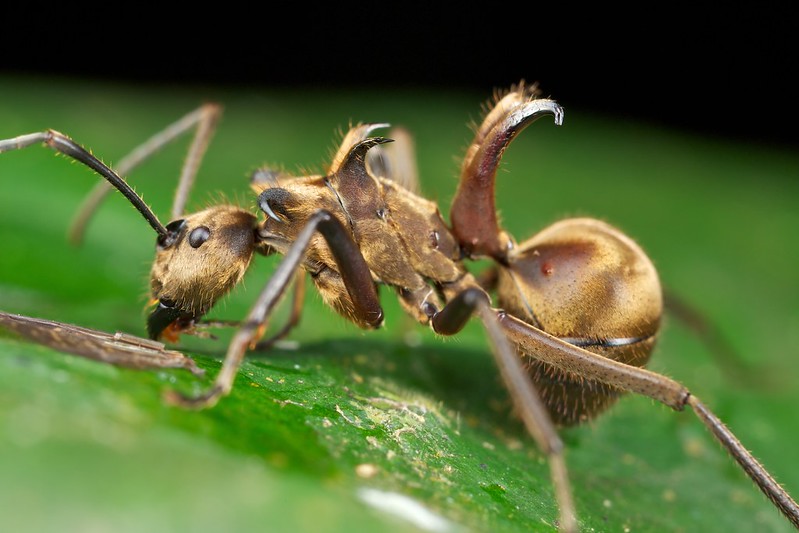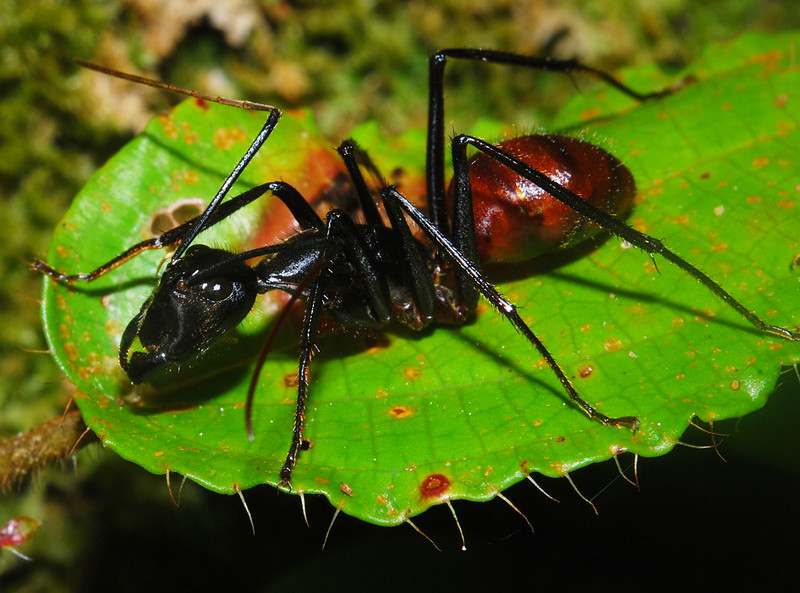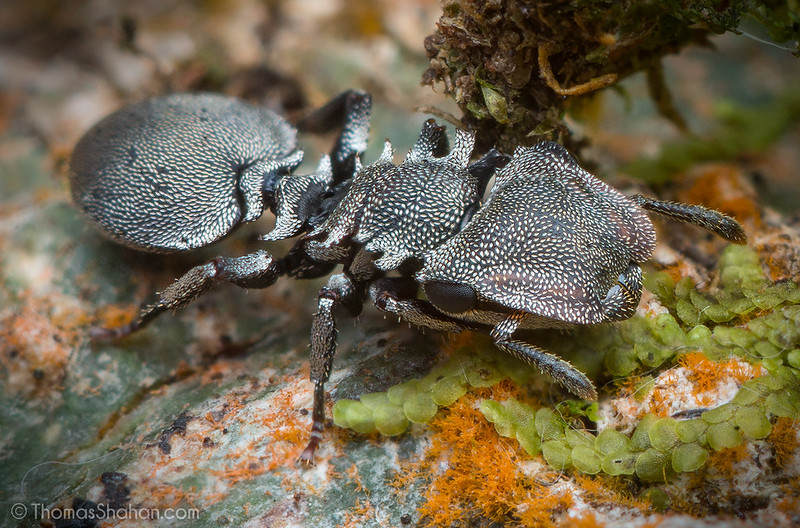Ants are everywhere in forests, fields, cities, and even our homes. But while most of us think of ants as tiny, uniform workers marching in line, the insect world hides some truly unique, rare, and exotic ant species that challenge everything we thought we knew. From ants with golden hook shaped spines to giants the size of your thumb, these creatures blur the line between science fiction and natural history. In this article, we dive into three of the most extraordinary ants on Earth: the Golden Fish Hook Ant, the Giant Forest Ant, and the armored Turtle Ant. Each offers a fascinating glimpse into evolution’s creativity and the complex societies hiding in the shadows of the forest floor.
The Golden Fish Hook Ant (Polyrhachis bihamata)

Tucked deep in the dense tropical forests of Southeast Asia lives one of the most exotic and visually striking ants on the planet: the Golden Fish Hook Ant. Named for the sharp, gleaming, fish hook shaped spines protruding from its back, this species is a defensive marvel. The spines not only deter predators but may also help anchor the ant when defending narrow tunnels in its nest. Their exoskeleton shimmers with a metallic golden sheen, making them stand out in a sea of brown and black insect life.
What makes this ant especially unique isn’t just its armor, it’s its behavior. The species belongs to the genus Polyrhachis, known for weaving silk produced by larvae into the walls of their nests, creating fortress like structures. Golden Fish Hook Ants are also fiercely territorial and display coordinated group defense strategies, forming living walls to block intruders.
Extremely rare in the wild and difficult to observe, the Golden Fish Hook Ant remains a symbol of how little we truly understand about the hidden biodiversity of the forest canopy. It is a golden jewel in the crown of tropical entomology.
Giant Forest Ant (Camponotus gigas)

The Giant Forest Ant, or Camponotus gigas, holds the title of one of the largest ants in the world, with worker ants measuring up to 2.5 centimeters long. Found primarily in the lowland rainforests of Southeast Asia, particularly in Malaysia and Indonesia, these ants are gentle giants with fascinating ecological roles.
Despite their intimidating size, Giant Forest Ants are mostly nocturnal foragers, feeding on honeydew, plant sap, and small insects. Their massive mandibles, while formidable looking, are primarily used for defense and nest excavation. Colonies can number in the thousands and occupy hollow tree trunks, using chemical trails to coordinate foraging over large distances.
What sets this species apart is its social complexity. Colonies of Camponotus gigas exhibit division of labor with different sized workers (a condition known as polymorphism) specializing in unique tasks. Their communication relies heavily on pheromones, and their foraging networks can span several meters from the nest.
This species is considered exotic not only because of its size but because of its gentle behavior and elusive, largely arboreal lifestyle. Observing them in the wild is a rare treat for entomologists and naturalists alike, offering insight into the diversity and scale of tropical insect life.
Turtle Ant (Cephalotes spp.)

Turtle Ants, belonging to the genus Cephalotes, are a marvel of adaptation. These exotic ants are best known for their armor plated bodies and especially their bizarre, disc shaped heads. Found throughout Central and South America, Turtle Ants use their unique heads as living doorways, literally plugging the entrances of their arboreal nests to block predators and intruders.
This unusual head structure, combined with their spiny exoskeleton, gives them a turtle like appearance, hence the name. But their evolutionary tricks do not end there. Turtle Ants are expert climbers and glide through the forest canopy, steering their fall if dislodged, a trait rare among ants and crucial for survival in high branches.
They are also known for their cooperative social structure. Colonies span across interconnected tree cavities, and members can recognize and support non nestmates within the same colony network. This kind of social fluidity is rare among ants and demonstrates advanced forms of recognition and cooperation.
With their strange appearance, gliding ability, and architectural defense strategies, Turtle Ants embody the kind of evolutionary creativity that makes the insect world endlessly fascinating. They are not just ants, they are armored engineers of the treetops.
FAQ: The Rare, Exotic, And Unique Ants
Why are these ant species considered rare or exotic ?
They live in remote habitats, have specialized traits, and are rarely seen by people. Some have very small distributions or unique ecological roles.
Are Golden Fish Hook Ants dangerous to humans ?
No, they are not dangerous to humans. Their spines are defensive against predators but pose no threat to people.
How do Turtle Ants use their heads as shields ?
They position their flat, disc shaped heads into nest entrances to physically block intruders like a living plug.
Where can Giant Forest Ants be found ?
They are native to lowland rainforests in Southeast Asia, especially Malaysia and Indonesia.
Can you keep these ants as pets ?
Most of these species are not suitable for captivity due to their size, habitat needs, and conservation status.
A Journey Into Earth’s Most Unique Colonies
These unique and rare ant species are not just biological curiosities, they are vital pieces of the ecosystems they inhabit. From forest floor giants to canopy dwellers with shield like heads, their strange adaptations remind us of the vast diversity still hidden in the natural world. As we learn more about exotic ants like these, we not only uncover evolutionary wonders but also deepen our appreciation for the complex web of life beneath our feet and above our heads.
Want to explore more about rare ants and exotic insects? Discover other unique species and fascinating ant behavior in our insect archive today.
